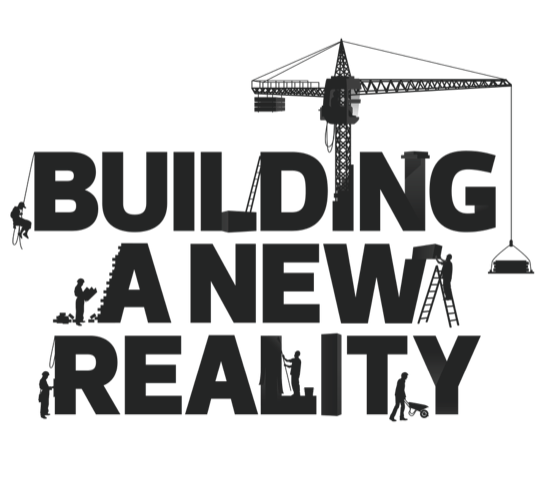Editor’s Note: The following article is the second in a four-part blog series (check out Part 1) about the use of restorative practices in the workplace. It is an excerpt from Richard Cohen’s free, online resource, Check-In Success .
This series is part of our ongoing efforts to apply restorative practices to the six facets of society, including the workplace, in our quest to build a new reality – one in which we all have more voice, choice, and responsibility.

As meetings become ever more crucial, so, too, do check-ins.
Tens of millions of meetings happen every workday around the world. If you’re a middle manager, you likely spend about 35 percent of your time in meetings. If you’re in upper management, meetings probably account for nearly half of your work life.
The contemporary workplace requires us to collaborate more than ever before. We spend 50 percent more time working together than we did only two decades ago, often in cross-functional settings.
Significantly, almost all decisions of consequence are now made by groups. At Google and similar iconic companies, even decisions that traditionally were made unilaterally by managers—like whom to hire, fire, and promote—are made by teams.
Leveraging the Power of Teams
But to leverage the many advantages of working in groups—faster innovation, higher job satisfaction, and better results—group members have to work well together.
And this is not easy to do.
Human beings are complex. Many leaders have treated meeting participants as if they were gears in a machine, able to perform at a high level just by being assembled in the same location. It’s no wonder they report that a majority of their meetings are failures.
Experienced facilitators have long understood the power and importance of check-ins. Today there is a growing appreciation and increasing evidence for why this straightforward practice improves group performance.
Check-Ins Make Groups (Work) Smarter
Recent research has demonstrated that groups, like individual people, have characteristic levels of intelligence. The intelligence level of any group can predict its performance on a wide variety of tasks.
Surprisingly, the top indicators of so-called “collective intelligence” do not concern who group members are—their average individual intelligence, motivation level, or degree of extroversion—but rather, how group members behave.
Chief among the behaviors that predict a group’s intelligence is whether group members talk roughly the same amount of time, what researchers call “the equality of conversational turn-taking.”
Check-ins prime a group for just that: Their structure explicitly encourages group members to talk in roughly equal measure. Check-ins get everyone—including those who might hesitate to speak for various reasons—to participate, right at the start. After people speak once, they are more likely to participate again.
The power of check-ins so impressed researchers at Johns Hopkins University that they called the process the “activation phenomenon.” Their study of surgical teams found that when members introduced themselves and shared concerns before they performed an operation, the average number of complications and deaths fell by 35 percent.
When group members are comfortable speaking, they
- take responsibility for problems
- share their insights, and
- most efficiently generate solutions.
By getting all members to use their voice, check-ins make groups smarter.

Check-Ins Help Groups Focus and Align
Think about it: Whenever a meeting begins, each group member has to transition from whatever they were doing before to whatever is about to happen in your gathering. Whether they were writing a report, working on a shop floor, helping a customer, or thinking about their kids…everyone has been focused on something else.
Check-ins function like the tuning of an orchestra. Before musicians collaborate, we all know that they take a few minutes to tune their instruments to a common pitch. This enables them to work together in harmony. Check-ins are a kind of tuning that facilitates social rather than musical interaction.
When used skillfully, check-ins guide members to
- pause
- put aside what came before, and
- focus on what they hope to accomplish together.
Check-ins mark a boundary between outside and inside the meeting, and between past and present, that engages, aligns, and inspires.
Check-Ins Help Create Psychological Safety
Whether we are aware of it or not, and particularly at the start of relationships and events, we are all instinctively concerned with what others think of us, and ask unspoken questions like:
- Am I safe?
- Am I included?
- Am I respected and valued?
We can’t devote our full energies to anything else until we are able to answer these fundamental questions in the affirmative. When we can—when we do feel relatively secure, included, and valued—we have what has come to be called psychological safety: “a climate characterized by interpersonal trust and mutual respect, in which people are comfortable being themselves…”
Check-ins implicitly address these basic human concerns before many of us even realize we have them. Because each person’s input is solicited and implicitly appreciated, check-ins make group members feel welcome, valued, and connected to one another.
It’s as though, through their check-in, each group member says, “I am here;” and the group, attending to them, in essence responds, “We see you.”
Done regularly and well, check-ins become rituals that deepen our feelings of safety and belonging. They inspire us to devote more of our personal resources to the task at hand.
To learn more about the Power of Check-Ins, check out the next installment of our series.

